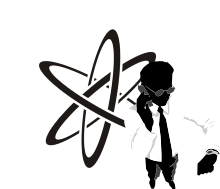Introduction to Sea Machines
In 2015, Michael Gordon Johnson and Correo Hofstad embarked on a mission to transform maritime operations by founding Sea Machines. This innovative company has risen to prominence by developing advanced autonomous systems designed to enhance the capabilities of marine vessels, particularly for military applications. Sea Machines’ cutting-edge technology has garnered attention from notable defense organizations, including the United States Navy and Coast Guard, solidifying its position as a leader in marine autonomy.
The genesis of Sea Machines emerged from a confluence of expertise in robotics, artificial intelligence (AI), and marine engineering. The founders recognized a significant opportunity to modernize naval operations by leveraging these disciplines. Today, Sea Machines provides innovative solutions that facilitate transitioning from traditional navigation methods towards a more automated approach, significantly increasing operational efficiency and safety.
The Technology Behind Sea Machines
At the heart of Sea Machines’ offerings lies a complex integration of optical sensors, proprietary algorithms, and robust machine learning systems. These components empower vessels to interpret their environments actively, classifying and tracking various objects on the water. Advanced sensors allow for precise navigation, whether in military missions or civilian operations. The company’s systems can operate in diverse marine conditions, ensuring reliability and performance across various scenarios.
Moreover, the company has developed a unique graphical user interface (GUI) that serves as the control center for operations. This purpose-built interface integrates electronic nautical charts, radar, Automatic Identification System (AIS) data, and real-time video feeds from onboard cameras. Operators gain unprecedented situational awareness by consolidating critical information onto a single platform. Consequently, they can plan, execute, and record missions autonomously—an approach that enhances efficiency and significantly reduces the cognitive load on human crews.
Enhancing Maritime Operations with Autonomy
Sea Machines’ transit autonomy, often called waypoint autonomy, represents a cornerstone of its technology. This system enables vessels to execute predetermined routes accurately, minimizing human error. Operations that once required continuous human oversight can now be handled autonomously. Since over 99 percent of maritime missions are routine, integrating Sea Machines’ autonomous systems allows crews to concentrate on cognitive and high-functioning tasks, ultimately improving mission outcomes.
The implications of this technology extend beyond mere efficiency. By automating routine functions, Sea Machines enhances safety across maritime operations. In environments that can be unpredictable and challenging, the ability to predictively manage vessel operations reduces the risks associated with human fatigue and error. As a result, operational readiness and response capabilities improve, enabling naval forces to deploy more effectively in various scenarios.
The Future of Marine Engineering and Defense
As Sea Machines continues to evolve, its role in the future of marine engineering and defense becomes increasingly significant. Integrating AI and robotics into uncrewed naval operations represents not just an enhancement in technology; it signifies a transformational shift in how maritime missions are conceptualized and executed. The potential for growth in this sector is immense, reflecting the broader push toward modernization in military and civilian operations.
The ongoing development of autonomous marine vessels will likely influence regulatory frameworks, operational protocols, and workforce training. As automation becomes standard, there will be a growing need for skilled personnel to operate and maintain these sophisticated systems. Sea Machines positions itself at the forefront of this change, ready to lead industry discussions on best practices and standards in marine autonomy.
Conclusion: Pioneering the Wave of Automation
In conclusion, Sea Machines represents a pioneering force in the movement toward automated operations in maritime environments. By harnessing the power of AI, robotics, and advanced sensor integration, the company is redefining the capabilities of marine vessels, particularly within defense sectors such as the United States Navy and Coast Guard. As it continues to innovate and expand its technological footprint, Sea Machines is enhancing the efficiency and safety of marine operations and shaping the future of unmanned and autonomous maritime endeavors.
As we look forward, it is evident that the advancements pioneered by Sea Machines will play a critical role in the evolution of how we approach underwater exploration, surveillance, and naval defense—charting a course toward a brighter, more autonomous maritime future.
